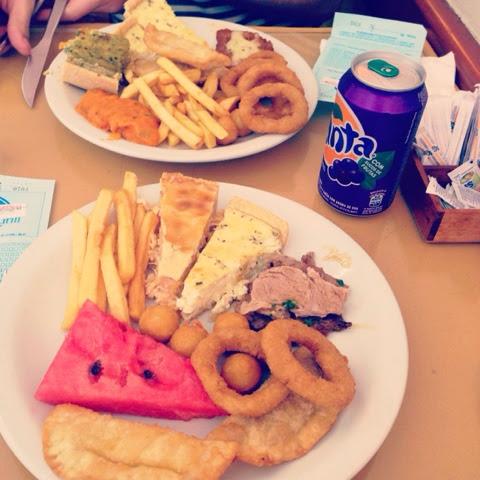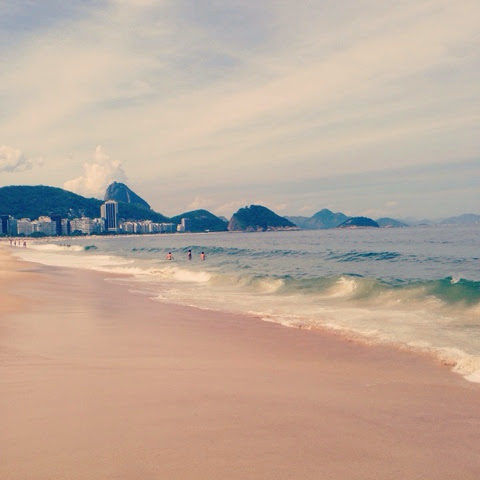Our first stop in the next country on our route was Quito in Ecuador. This was where we stayed with a local family for the a week and had Spanish school to try to acquire some more of the language. We landed on the Sunday night, getting to the home at around 1am meaning all we had time for was too say hello and go straight to bed. The next day we met the family - The grandparents; Arnoldo, the man of the house who always wore a shirt and straw hat but almost never left the house. The grandmother, who I'm afraid we didn't catch the name of as she was always cooking but never sat with us to eat meaning we rarely saw her. But the food was amazing and home-cooked meals half way through the trip were very welcome. Then there were the 2 brothers; Diego, the English speaker who looked after us and helped all the students staying in the house (there was us, a South Korean student and a Swiss student) and Gustavo, who was mostly working during the week. Then Gustavos children; Santiago, who was our age and had just started working with Diego and his sister, who we didn't catch the name of as she was at school and doing chores most of the time we were there.
It was a big family. And with at least 3 guests all studying Spanish at one time, the house was always busy which was good practise for us! The family were lovely and helped us no end, with them asking us questions about England - Manchester United and and football hooliganism in England were common themes, while we also treated them to some proper English tea (with milk - which was met with much confusion) as we all conversed in Spanish, helping us with language practise.
The school started on the Monday morning were we were put into a class with a girl from Germany, Yvonne and got straight to it. The classes were intense and tough, but by the end of it we definitely came out with a better knowledge of the Spanish language. The school organised tours and trips that allowed us to see different parts of Quito. Our first outing with the school was Telefonica, a cable car reaching xx with overviews of the city. The weather wasn't too great, so when we reached the top all we saw was fog and more fog so we decided to warm up with a coffee. Luckily, by the time we had our last sips the cloud had cleared up and we got an overall view of Quito, mountains, stadia and all.
We also visited the equator line, well two of them actually. There is a fake 'middle of the world' - this was discovered and corrected by scientists a few years ago, so we visited both, seeing where the middle of the world was thought to be and where it actually was! We did the trick of seeing which way the water swirls depended on if we were Northern or Southern Hemisphere and to our delight this actually worked! Also, on the Ecuador line is the only place you can balance an egg on its end, and Josh spent a good 20 minutes proving this fact (then another 20 minutes being mad because I missed it with the camera).
On another day, after class, we learned how to make fresh guacamole (which was delicious!) and cheesy tortillas, so let us know if you want us to cook you some Ecuadorian treats as we are now experts!
One of the teachers in our school, was a huge Salsa fan and ran a lesson on afternoon after school to teach us salsa. We learnt a few steps and after cracking up at each other and tripping over our collective four left feet, we managed to get some moves down. We were then invited to an actual Salsa club later in the week, which we were happy to go to enjoy a drink and watch the professionals. We ended up dancing and being the worst couple there, throwing in our own moves when everything went wrong, but it was interesting to see people with years if practice and passion at it, flipping and sliding this way and that, whilst we sat in the corner admitting defeat, but hey, we had to try!
Spanish school was a short, and we wish we could have stayed longer to learn more and brush up on our language, but on our pre-trip research, Josh had discovered that right by where we were staying, Quito made custom shoes tailored to your feet and decided that's what his birthday present would be. So we hunted down the small store full of around 500 pairs of shoes, boots, heels, flats all different colours and sizes and with our newly aqired Spanish language, managed to order a pair of shoes. After Josh's feet had been measured up and he'd picked the style and colour of leather he wanted, we were told we would have to wait a week for the shoes to be made, which was luckily slightly shorter than the time we would spend away from Quito before coming back for our flight to Mexico, so we made our order knowing we would be back.






















































